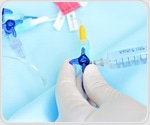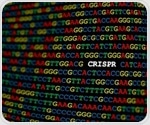| |  A comprehensive review in The Journal of Clinical Investigation finds no overall link between GLP-1 receptor agonists and increased cancer risk, countering early safety concerns. Instead, evidence suggests possible protective effects for certain cancers, supported by metabolic and immune-modulating mechanisms. A comprehensive review in The Journal of Clinical Investigation finds no overall link between GLP-1 receptor agonists and increased cancer risk, countering early safety concerns. Instead, evidence suggests possible protective effects for certain cancers, supported by metabolic and immune-modulating mechanisms. | |
|
| |  New prostate cancer research from an international team led by the Center for Genetic Epidemiology at the Keck School of Medicine of USC has yielded discoveries that could improve screening and treatment for patients of African ancestry. New prostate cancer research from an international team led by the Center for Genetic Epidemiology at the Keck School of Medicine of USC has yielded discoveries that could improve screening and treatment for patients of African ancestry. | |
|
| |  Prostate cancer relies on genetic "switches", called enhancers, that can turn on tumor-promoting genes. Prostate cancer relies on genetic "switches", called enhancers, that can turn on tumor-promoting genes. | |
|
| |  A new survey from Orlando Health reveals that over one-third of men (38%) would rather endure stressful situations, such as watching their team lose a big game or being stuck in traffic, than discuss their prostate health. A new survey from Orlando Health reveals that over one-third of men (38%) would rather endure stressful situations, such as watching their team lose a big game or being stuck in traffic, than discuss their prostate health. | |
|
| |  A poorly characterized protein, historically thought to be a chaperone or enzyme, may actually be a key player in prostate cancer. A poorly characterized protein, historically thought to be a chaperone or enzyme, may actually be a key player in prostate cancer. | |
|
| |  A hormone produced in the thyroid gland can play a key role in the development of prostate cancer. A hormone produced in the thyroid gland can play a key role in the development of prostate cancer. | |